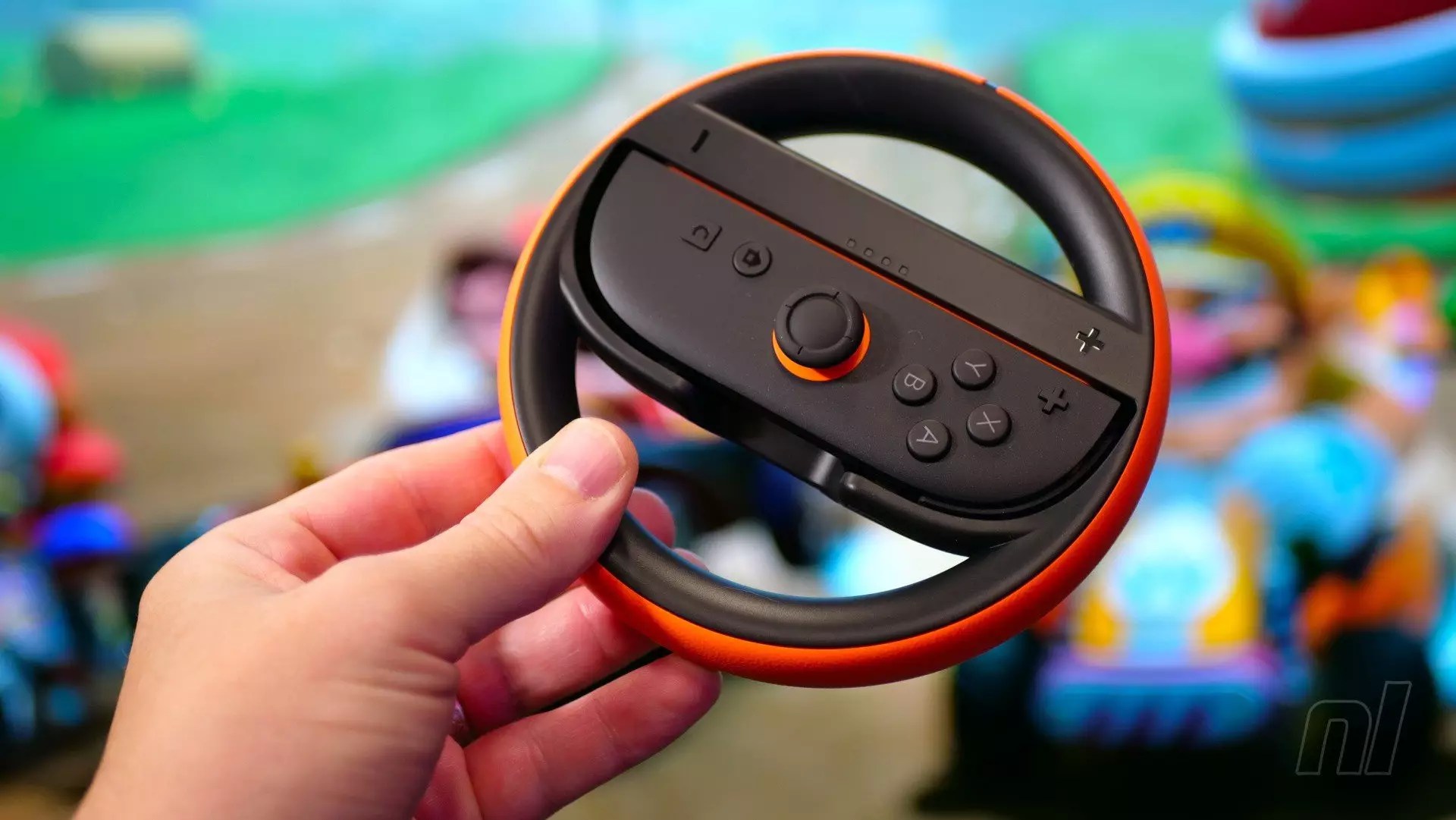Nintendo has always prided itself on designing gaming experiences that appeal across the spectrum—from hardcore enthusiasts to casual players and families. With the release of the Switch 2, it’s unsurprising yet still commendable that Nintendo introduces refined accessories aimed more at entertainment than precision. The new controller wheels underscore this philosophy: they are not tools for serious racing but rather conduits for fun, social interaction, and shared laughter. These accessories symbolize Nintendo’s commitment to making gaming accessible and inviting for all, regardless of skill level, age, or the expectation of competitive excellence.
In an era dominated by hyper-precise controllers and professional e-sports, Nintendo’s choice to emphasize playful inclusivity is a deliberate, often underrated stance. These wheels do little to improve racing scores but amplify the joy of multiplayer chaos. Their affordability—just a few pounds or dollars for a pair—further hints at their role as party accessories rather than high-stakes peripherals. They dismantle barriers that might discourage casual players from jumping into multiplayer fun and shift the focus from perfection to shared experience. Such accessories prioritize social bonds, spontaneity, and laughter—elements that, paradoxically, often make gaming moments more memorable and meaningful than the pursuit of victory.
Design and Usability: Functionality Over Precision
Design-wise, Nintendo’s latest iteration of the wheels reveals thoughtful tweaks made to accommodate the larger Joy-Con controllers—and it shows effort to improve aesthetics and tactile engagement. The color accents and grip-friendly design suggest a focus on comfort and usability, even if the primary goal isn’t accuracy. The magnetic snap-in mechanism is a highlight; it simplifies setup and ensures a snug fit, which is vital when engaging in frantic multiplayer chaos. The inclusion of trigger-like buttons on the back mirrors the experience of actual steering, but it’s also a reminder of the inherent limitations of motion-based peripherals: they can be imprecise, leading to frustration during tight turns or rapid lane changes.
Despite these flaws, the wheels evoke a specific kind of appeal—namely, their ability to turn enjoyable gaming into a lighthearted spectacle. It’s less about perfect control and more about immersive antics, which can genuinely enhance the social aspect of Mario Kart. The floaty, non-fixed nature of the wheels introduces a physicality that feels novel, akin to waving a toy car steering wheel around in a game, which can ramp up the amusement factor tremendously. That said, the lack of precision does make them less suitable for dedicated racers who value control and accuracy, but this isn’t the target demographic. Instead, the emphasis is on group fun, chaotic races, and the kind of shared silliness that fosters bonds rather than competitive dominance.
The Cultural Context: Embracing Imperfection and Spontaneity
What these wheels reveal about Nintendo’s broader strategy is its willingness to embrace imperfection as a virtue in certain contexts. The gaming giant understands that not every player seeks or needs mastery; sometimes, goofing around with friends or family provides enough entertainment to justify the investment. The wheels are inexpensive, easy to use, and—crucially—they lower the barrier to entry for multiplayer gaming. No longer does everyone need a Pro Controller or the precise thumbstick to participate; a simple, clunky plastic wheel can set the scene for hours of collective hilarity.
This attitude also echoes a broader cultural shift in gaming and entertainment—where the focus is less about skill and more about shared experiences and spontaneous fun. Nintendo’s design intentionally invites players into a playful zone where control imperfections are part of the charm. They are reminders that games are ultimately about joy, camaraderie, and creating memories, not just achieving high scores or perfect lap times.
Moreover, these accessories subtly challenge the conventional wisdom of gaming hardware as something purely serious and technical. They serve as tools for social connection, reducing the intimidation factor often associated with competitive gaming setups. In this way, Nintendo reaffirms its identity as a company that values inclusivity and joy over the pursuit of perfection, a stance that will resonate strongly with families, casual gamers, and nostalgic fans looking for light-hearted fun.
The Limitations and Cultural Commentary
While the appeal of these steering wheels is undeniable within their intended context, one must also critically assess their limitations. They are clearly not designed for precise racing or for players seeking competitive edge. Their imprecision can be frustrating for serious players, leading to awkward or inconsistent turns that detract from the gaming experience. This isn’t a flaw; it’s an inherent trait of a peripheral built for giggles rather than competition.
More interestingly, these accessories reveal a broader cultural commentary about gaming: it’s not always about mastery or high-fidelity control. Sometimes, the joy of playing comes from the process itself—laughing at your friend’s ridiculous turns or exaggerated steering motions. Nintendo’s wheels boldly celebrate this philosophy, emphasizing that the journey can be just as fun as the destination. They serve as a playful critique of the obsession with precision and competitive perfection that often dominates gaming discussions, reinforcing that sometimes, it’s okay to play loosely, messily, and with no regret.
By fostering a relaxed, inclusive atmosphere, these wheels highlight a fundamental truth: gaming is ultimately about making memories and sharing fun—sometimes even more so than winning. And in a world increasingly obsessed with metrics, leaderboards, and high scores, this rebellious, carefree approach stands as a refreshing reminder that the most treasured gaming moments are often the silliest and simplest.


Leave a Reply